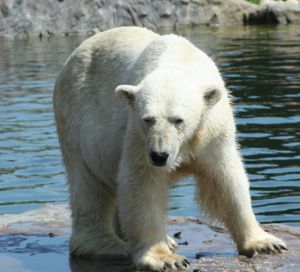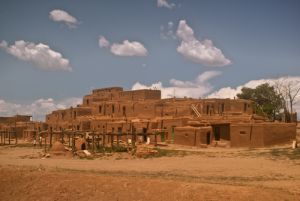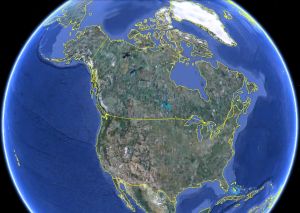
Exploring the history and experiences of mixed heritage persons and inter-racial relationships across the world

Exploring the history and experiences of mixed heritage persons and inter-racial relationships across the world
Apart from a look at the Métis of Canada, North America will not be covered in any great detail for the 1st edition.
North America is a story of immigration - large scale immigration especially to the USA. As usual with colonial history, the story starts with settlements from several European counties followed with the culling of native populations by old world diseases such as influenza, measles and smallpox.
 In Canada - France, once the largest colonial power in North America, ceded nearly all of its colonies in 1763 after the Seven Years' War and in 1783 in the Treaty of Paris recognized American independence and ceded territories south of the Great Lakes to the United States. Continued outbreaks of European infectious diseases resulted in a decrease of 40 to 80 percent of Canada's indigenous population. After the War of 1812 between the United States and the British Empire, over 600,000 immigrants landed in Canada from Britain and Ireland but between one-quarter and one-third of all who came before 1891 died of infectious diseases.
In Canada - France, once the largest colonial power in North America, ceded nearly all of its colonies in 1763 after the Seven Years' War and in 1783 in the Treaty of Paris recognized American independence and ceded territories south of the Great Lakes to the United States. Continued outbreaks of European infectious diseases resulted in a decrease of 40 to 80 percent of Canada's indigenous population. After the War of 1812 between the United States and the British Empire, over 600,000 immigrants landed in Canada from Britain and Ireland but between one-quarter and one-third of all who came before 1891 died of infectious diseases.
Today some 16% of Canadians identified themselves as a member of a visible minority group, which is defined in the 2006 Census as 'persons, other than Aboriginal people, who are non-Caucasian in race or non-white in colour'. Aboriginal people refers to local Amerindians including the Inuit and the Metis. The Métis make up over 1% of population, as at the 2006 Canadian census, are a group of people of mixed heritage that originated in the 17th century when some members of one of the over 600 recognized natives, mainly Inuit, mixed with European settlers.
Most mixed heritage people would fall in this visible minority group but it is not very clear just how much. However a google search of 'Mixed Heritage Canada' (Mixed Heritage Canada) will reveal an issue that is growing inside Canada as much as it is in Europe and the USA.
The USA is a fascinating study due to the country originally being a collection of various colonies that slowly came together, sought and gained independence and followed an imperialist expansion to the West until it itself became a colonising power.
 Spain, France and Russia all claimed colonies in what is now the USA. The Thirteen English colonies that would become the original US states were founded along the east coast beginning in 1607. The population of the Thirteen Colonies grew rapidly from approximately 50,000 in 1650 to some 2.5 million by 1775. High birth rates and low death rates were augmented by steady flows of immigrants from Europe and slaves from the West Indies. By 1860, there were nearly four million slaves residing in the United States, nearly eight times as many from 1790.
Spain, France and Russia all claimed colonies in what is now the USA. The Thirteen English colonies that would become the original US states were founded along the east coast beginning in 1607. The population of the Thirteen Colonies grew rapidly from approximately 50,000 in 1650 to some 2.5 million by 1775. High birth rates and low death rates were augmented by steady flows of immigrants from Europe and slaves from the West Indies. By 1860, there were nearly four million slaves residing in the United States, nearly eight times as many from 1790.
The USA's expansion started with the Louisiana Purchase was the acquisition by the United States of America of France's claim to the territory of Louisiana in 1803 which they had regained sovereignty in the secret Treaty of San Ildefonso of 1800. This was followed by further expansion by the cessation of Texas and a war with Mexico with expanded the USA to the Pacific Ocean. The Gold Rush encouraged rapid expansion westwards.
The USA's colonial aspirations started the Spanish-American War where in December 1898 Spain and the U.S. signed the Treaty of Paris to end the war, with Cuba becoming an independent nation and Puerto Rico, Guam, and the Philippines becoming U.S. territories.
Meanwhile it is estimated that from 1880 to 1914 more than 22 million people migrated to the United States. In 1924, after WWI, the USA passed immigration laws to control immigration making it a country of immigrants where the older immigrant communities assume indigenous positions, the original indigenous population now simply a minority population.
Over a number of censuses, racial classifications have been defined and redefined to try and classify this great mix that is the USA and reflects a very diverse history. Most significantly in the 2000 Census respondents were given the option of selecting one or more race categories. On offer were:
 Of some note is that apart from race classification an ethnicity question is asked as to whether the respondent was 'Hispanic or Latino' and/or 'Not Hispanic or Latino'. 'Hispanic or Latino' is defined as "a person of Cuban, Mexican, Puerto Rican, South or Central American or other Spanish culture or origin regardless of race. A 2008 report from the Census Bureau projects that by 2042, non-Hispanic whites will no longer make up the majority of the population.
Of some note is that apart from race classification an ethnicity question is asked as to whether the respondent was 'Hispanic or Latino' and/or 'Not Hispanic or Latino'. 'Hispanic or Latino' is defined as "a person of Cuban, Mexican, Puerto Rican, South or Central American or other Spanish culture or origin regardless of race. A 2008 report from the Census Bureau projects that by 2042, non-Hispanic whites will no longer make up the majority of the population.
The censuses reveal that despite Miscegenation or interracial marriage, most notably between whites and blacks, was deemed immoral and illegal in most states until the 20th century, the U.S. has a growing multiracial racial makeup.
The issues that the United States is facing in immigration and multi-culturalism today are unlike the other ex-colonies but are now more akin to those being faced by its previous colonial masters in Europe. It will be interesting to see how the new anti-immigration laws in the States bordering Mexico will play out in the future.
The 1st edition will not cover North America in detail as there are many available sources of information for those who seek further information. A list of relevant links and resources will be maintained on this page for those who seek this further information.